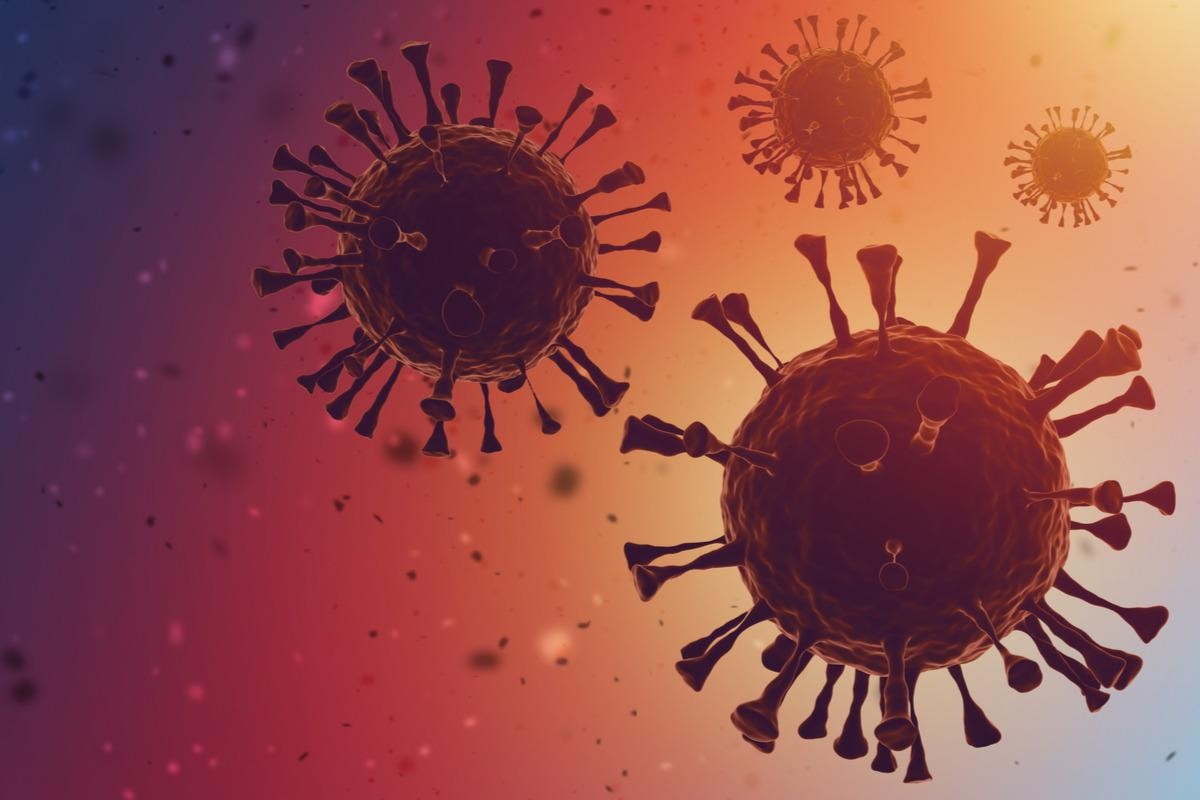In a recent study posted to the medRxiv* preprint server, researchers used molecular surveillance to identify cases of co-infection with severe acute respiratory syndrome coronavirus 2 (SARS-CoV-2) variants of concern (VOCs) Delta and Omicron reported in Argentina during December 2021 and January 2022.

Background
Previously, whole-genome sequencing (WGS) was widely used to monitor SARS-CoV-2 variants; however, it was time-consuming and expensive, so its usage in resource-limited settings remained restricted.
Molecular surveillance has allowed the identification of sporadically reported cases of co-infection in a single individual by two different SARS-CoV-2 lineages. These cases presented an opportunity to examine viral genetic recombination and the emergence of new SARS-CoV-2 lineages that may cause more severe clinical coronavirus disease 2019 (COVID-19) symptoms.
Co-infections with SARS-CoV-2 lineages, both local and global, are quite relevant because variant circulation keeps changing and new variants continue to emerge. The emergence of new recombinant viruses, only possible due to co-infection, results in increased transmissibility or immune evasion as this combines advantageous mutations from distant variants. Hence, decreasing the prevalence and circulation of SARS-CoV-2 variants could minimize the formation of recombinant lineages with higher competitive fitness.
However, studies exploring the frequency of co-infected patients and their possible role in promoting recombination-driven SARS-CoV-2 evolution are sparse.
About the study
In the current study, researchers analyzed 2067 SARS-CoV-2-positive samples collected between December 2021 and January 2022 in the province of Córdoba, Argentina, for VOC detection.
They conducted this study as part of the molecular surveillance program of the local government of the Córdoba province. They used a TaqMan™ SARS-CoV-2 mutation panel to detect L452R and P681R mutations and, based on the results of the first round of mutation identification, detected the P681H, K417N, L452Q mutations.
They used a multiplex real-time reverse transcriptase-polymerase chain reaction (RT-PCR) to simultaneously detect the wildtype (wt) and the mutant-nucleotide sequences.
Next, they performed WSG on the samples that showed a co-infection profile in the mutation-specific real-time RT-PCR using the Illumina platform and submitted sequenced samples to the Global Initiative on Sharing Avian Influenza Data (GISAID) database.
Study findings
Of the 2067 analyzed samples, three, i.e., only 0.1% of SARS-CoV-2 cases, showed profiles compatible with co-infections. Of these three, only one patient presented severe symptoms, including pneumonia and dyspnea. However, it most likely occurred because this patient was not vaccinated, was over 60 years of age, and suffered from arterial hypertension. Further research is needed to confirm observations made on co-infected patients.
Although all through the study duration, the distribution of variants kept changing, Omicron was detected at the end of January 2022.
The L452R mutation presented amplification for the mutation and the wt sequences, whereas the P681H mutation was positive for the mutation sequence and negative for the wt sequence. The amplification of the P681R mutation was positive for the mutation sequence but negative for the wt sequence. Thus, raising the possibility of another mutation in that position. Finally, the K417N mutation, together with its wt sequence, was weakly amplified in cases of co-infections.
Repeating the nucleic acid extraction and specific RT-PCRs on original test samples for VOC detection produced the same results.
There was enough ribonucleic acid (RNA) and a high viral load in sample N°1 for further investigation via WGS. The sequence contained 29867 nucleotides, of which 0.34% were mutations, compared to the reference sequence WIV04. The proportion of reads matching Omicron was higher than reads corresponding to the Delta VOC.
Conclusions
According to the authors, this is the first study describing co-infected cases carrying two distinct lineages of SARS-CoV-2 in Argentina. Omicron was first identified in Córdoba province during the initial days of December 2021. It quickly disseminated, accompanied by an increase in the number of cases, giving rise to the third COVID-19 pandemic wave in the province and entire Argentina.
Although rarely reported due to difficulties in identifying them, perhaps co-infection events are quite common during periods of high viral circulation; however, in such cases, the presence of one of the lineages in a greater proportion results in the detection of only one lineage.
The study highlighted the importance of continual molecular surveillance to detect co-infections and viral recombinations, especially during high viral circulation. It could also help evaluate clinical cases related to co-infections to explain occurrences of severe cases.
Nevertheless, similar to previous reports, the authors of the current study detected co-infections during the third wave of COVID-19 in Argentina, with very high levels of viral circulation.
*Important notice
medRxiv publishes preliminary scientific reports that are not peer-reviewed and, therefore, should not be regarded as conclusive, guide clinical practice/health-related behavior, or treated as established information.
Pisano, M. et al. (2022) "SARS-CoV-2 genomic surveillance enables the identification of Delta/Omicron co-infections in Argentina". medRxiv. doi: 10.1101/2022.03.08.22270920. https://www.medrxiv.org/content/10.1101/2022.03.08.22270920v1
Posted in: Medical Science News | Medical Research News | Disease/Infection News
Tags: Avian Influenza, Coronavirus, Coronavirus Disease COVID-19, covid-19, Dyspnea, Evolution, Frequency, Genetic, Genetic Recombination, Genome, Genomic, Illumina, Influenza, Mutation, Nucleic Acid, Nucleotide, Nucleotides, Omicron, Pandemic, Pneumonia, Polymerase, Polymerase Chain Reaction, Research, Respiratory, Reverse Transcriptase, Ribonucleic Acid, RNA, SARS, SARS-CoV-2, Severe Acute Respiratory, Severe Acute Respiratory Syndrome, Syndrome

Written by
Neha Mathur
Neha is a digital marketing professional based in Gurugram, India. She has a Master’s degree from the University of Rajasthan with a specialization in Biotechnology in 2008. She has experience in pre-clinical research as part of her research project in The Department of Toxicology at the prestigious Central Drug Research Institute (CDRI), Lucknow, India. She also holds a certification in C++ programming.
Source: Read Full Article
